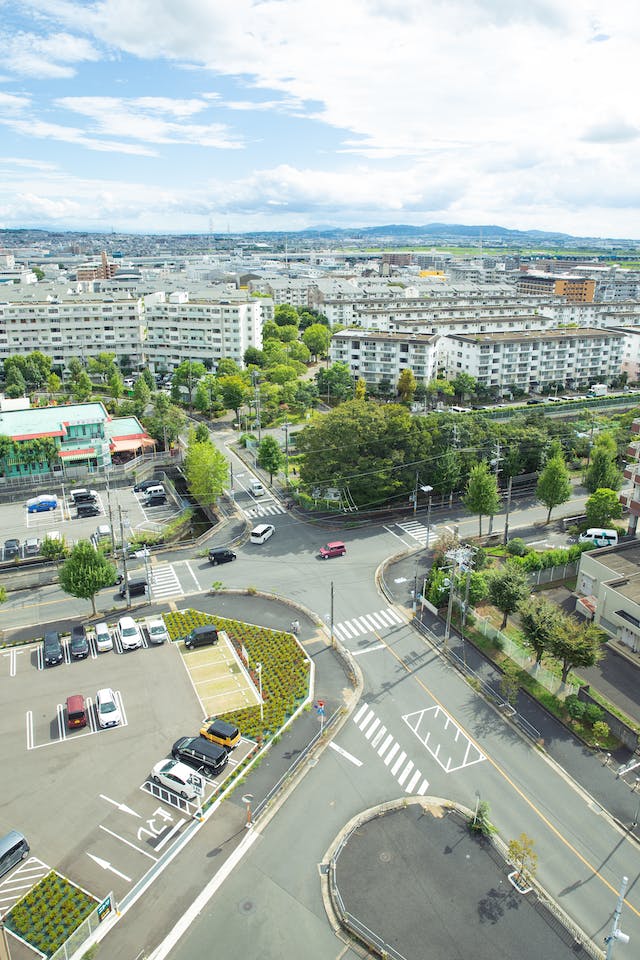According to Bloomberg, the US is home to around two billion parking spots – or roughly eight spots per vehicle on the road. It’s estimated that New York City contains approximately 12 Central Parks’ worth of parking spaces. And the other major coastal American city, Los Angeles, has it even worse: an estimated 14% of incorporated land in LA county belongs to parking.
Those stats are eye-opening, to be sure. But they only tell part of the story – and they don’t get us any closer to a solution.
Several urban planners, economists and transportation scholars lay the blame solely on one American institution: free parking. Below, let’s explore how free parking came to claim an outsized role in US cities, what hidden costs accompany free parking, and how creative attempts to modernize parking lots can help us reclaim the vibrancy and profitability of urban real estate.
How Parking Lots Claimed the American City
Any attempt to reduce down a century of parking history to a succinct paragraph is going to be an oversimplification. Nevertheless, here are the notable points.
In the first half of the 20th Century, cities underwent two massive demographic changes: urban densification and skyrocketing vehicle ownership. In other words: more people, more cars. In an attempt to accommodate the influx of vehicle owners, cities mandated “minimum parking requirements” for new developments, essentially stipulating that all new commercial and residential buildings be accompanied by free parking real estate.
As vehicle ownership waned, cities were left with the remnants – overbuilt, often-empty free parking spaces. Some cities continue to observe minimum parking requirements to this day, although most have recognized and amended the problem. Check out here if you want to talk to experts in car park management.
The Hidden Costs of Free Parking
As parking scholar and urban planning expert Donald Shoup notes, free parking comes with myriad problems. Here, again, are the notable points:
- Free parking isn’t free: The cost of free parking construction and maintenance rears its head in municipal and state taxes. Taxpayers essentially subsidize vehicle trips for car owners.
- Free parking deters public transit use: Expressed in the opposite, cities with minimized free parking saw an uptake in public transit use. It follows that free parking contributes to the overall carbon footprint of city residents.
- Free parking takes up space: Lots purpose-built for cars decrease the walkability of urban neighborhoods. They do not contribute to the commercial or social interests of communities.
What should property owners do with their parking real estate? How can they transform these parking lots into real estate that benefits surrounding communities?
What to Do About Empty Urban Parking Lots
The solutions to overbuilt free parking real estate are twofold: modern paid parking and creative alternate uses for parking lots.
Paid parking takes the financial burden from taxpayers’ shoulders and reassigns it to vehicle owners – essentially making it a retail transaction like any other. But parking customers need more if they’re going to be sold on the prospect of paid parking. They need convenience, speed and security. Property owners wishing to modernize their parking real estate should partner with a parking management company that can deploy cutting-edge hardware and software:
- cloud-based PARCS
- mobile apps that allow customers to find, compare and pay for spots
- And modern security hardware that keeps vehicles safe
Property owners should also consider alternate uses for their parking real estate. For instance, a company like REEF is rethinking these open spaces by adding modular applications like virtual kitchens, micro-fulfillment centers and community healthcare clinics to urban parking lots. It’s a creative way to turn once-empty urban real estate into vibrant hubs that service the surrounding community and local business owners.
The problem of free parking has a storied history in American cities. The way forward is clear: better paid parking, and creative approaches to urban parking real estate.

